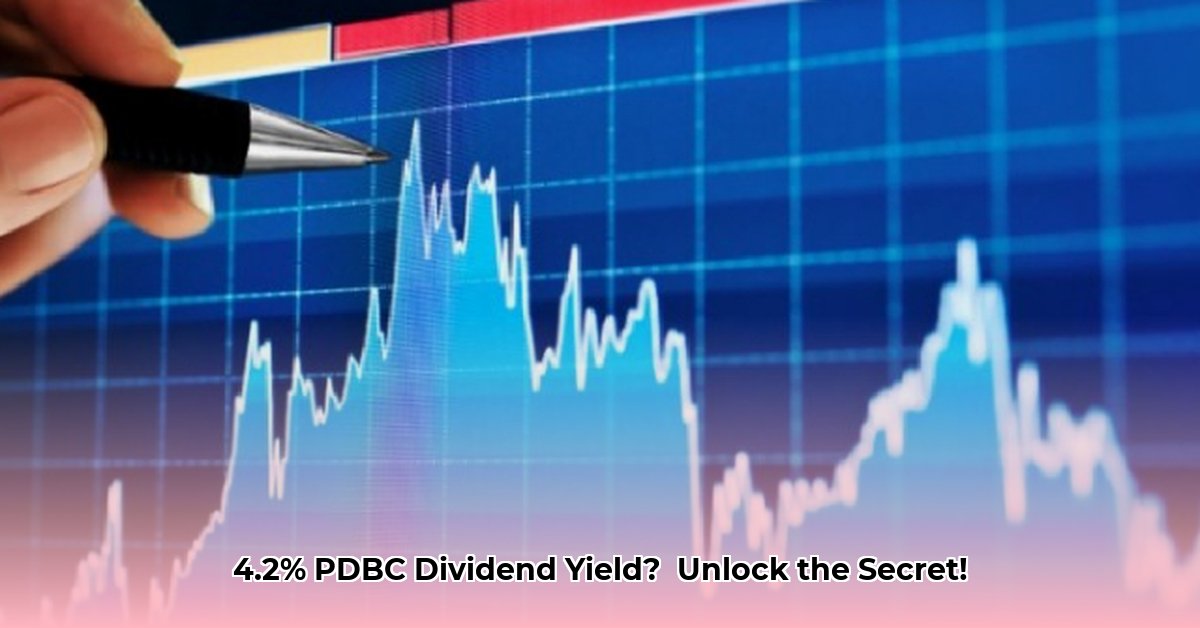
PDBC Dividend History: A Deep Dive into that 4.2% Yield
The Invesco Optimum Yield Diversified Commodity Strategy No K-1 ETF (PDBC) boasts a compelling 4.2% annual yield, attracting investors seeking income generation. However, a closer examination of its dividend history reveals a complex picture, requiring careful consideration before investment. This analysis explores the nuances of PDBC's dividend payouts, illustrating the importance of understanding the underlying factors influencing its performance. We will examine the historical volatility, analyze contributing factors, and discuss strategies for navigating the inherent risks.
Understanding PDBC's Dividend Volatility
PDBC's dividend payments have exhibited considerable volatility throughout its history. This fluctuation stems primarily from the inherent unpredictability of the commodity markets. Global economic events, geopolitical instability, and supply chain disruptions all play significant roles in impacting commodity prices, directly influencing PDBC's ability to distribute dividends. Therefore, simply focusing on the current 4.2% yield without understanding the historical context provides an incomplete picture of the investment's true nature. How can investors accurately assess the risks associated with this seemingly attractive yield?
A key factor contributing to this volatility is PDBC's investment strategy. The fund invests indirectly in commodities through futures contracts and other derivative instruments, adding a layer of complexity to dividend projections. Unlike direct commodity investments, the fund's structure can lead to discrepancies between the fund's underlying assets' performance and its dividend payouts. This indirect exposure introduces both potential benefits—like the "no K-1" tax advantage—and additional layers of risk.
Decoding the December 2021 Dividend Anomaly
The unusually high dividend payment in December 2021 ($5.39) stands out as a significant event. This outlier requires careful analysis to avoid misinterpretations. While it might represent a temporary surge driven by specific market conditions, it shouldn't be considered representative of future returns. This highlights the importance of not relying solely on recent data points, especially when assessing the reliability of future income streams. What factors contributed to this exceptional dividend, and are similar conditions likely to recur?
Detailed analysis of PDBC's holdings and the market conditions in December 2021 is needed to fully understand this event. Factors such as specific commodity price movements, successful derivative strategies, or unusual market dynamics might have influenced the payout. Focusing solely on the exceptionally high dividend without considering the context could lead to inaccurate expectations about future returns and potential overestimation of the fund's payout consistency.
Risk Assessment and Mitigation Strategies
Investing in PDBC inherently involves risk. The following table summarizes key risk factors and potential mitigation strategies:
| Risk Factor | Likelihood | Potential Impact | Mitigation Strategies |
|---|---|---|---|
| Commodity Price Swings | Very Likely | Significant | Diversification, hedging strategies (e.g., futures contracts), and staying informed about market trends. |
| Global Instability | Moderately Likely | Significant | Monitoring geopolitical events and adjusting investment strategy accordingly. |
| Regulatory Changes | Less Likely | Moderate | Keeping abreast of potential regulatory changes within the commodity sector. |
| ETF Issuer Issues | Unlikely | Low to Moderate | Monitoring the financial health and stability of the ETF issuer. |
PDBC: Who is it suitable for?
PDBC's suitability depends on an investor's risk tolerance and investment goals. What investor profiles are best suited for this type of investment vehicle?
- Income-oriented investors: The 4.2% yield is attractive, but the volatility necessitates a long-term perspective and a diversified portfolio.
- Experienced investors: A thorough understanding of commodity markets and risk management is essential.
- Risk-tolerant investors: The inherent fluctuations in PDBC's performance require the ability to withstand potential short-term losses.
Consult a financial advisor before making any investment decisions. This analysis does not constitute financial advice.
Conclusion: Navigating the Complexities of PDBC
PDBC's dividend history reveals significant volatility, driven by both the inherent unpredictability of commodity markets and the fund's indirect investment strategy. While the current 4.2% yield is attractive, successful investment requires a deep understanding of these complexities and a well-defined risk management plan. Diversification, careful monitoring of market conditions, and a long-term perspective are crucial for mitigating the inherent risks and maximizing potential returns. Further research exploring the specific factors contributing to past dividend fluctuations would benefit investors seeking a comprehensive understanding of this investment opportunity.